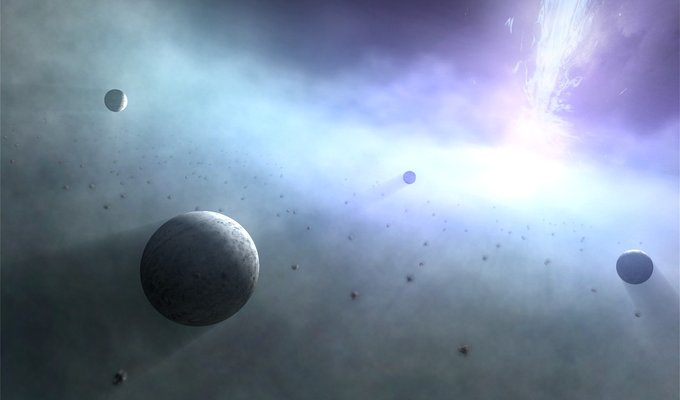To make a small Black Hole you would have to squash something with the same mass as the Earth into a tiny ball that is only a few millimetres wide!

For a long time we've known that planets form and live around stars. For example, the Sun is the parent star of all the planets in our Solar System. But now, astronomers have found clues that planets may be tougher than we thought and could even have formed in the harshest conditions known in the Universe.
When a star is born, any leftover gas and dust forms a disc around it, similar to Saturn's rings. Within this disc, small dust grains made of rock sometimes form. These grains can then collide and stick together, forming larger and larger objects — this is how planets are born.
New research has shown that this dust, gas and discs of material can also be found in the environment of giant black holes. Black holes are giant objects in space that exist very far from us, with a lot of material that is crammed into an extremely small region. Anything that gets too close to a black hole is pulled to it with such a strong force that it has no chance of escape.
The planets that would form in this harsh environment would likely be much bigger than our Earth, at least ten times bigger!
With today’s technology and science capabilities, we have no way of finding if these planets truly exist around black holes, but astronomers are hopeful that they’ll be able to find out in the near future.
Image credit: Kagoshima University
To make a small Black Hole you would have to squash something with the same mass as the Earth into a tiny ball that is only a few millimetres wide!